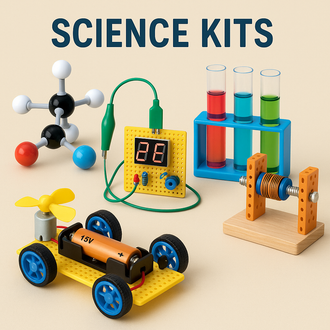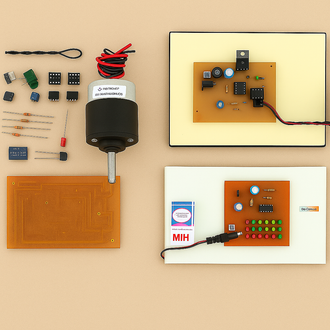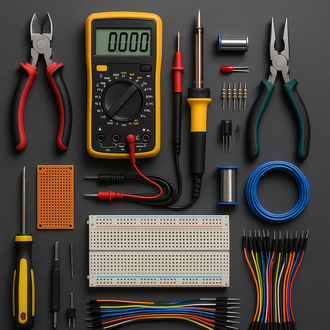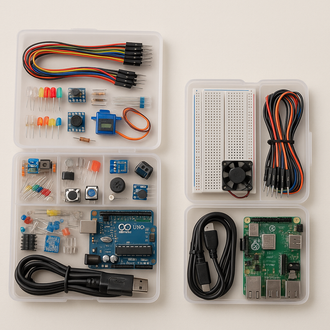
Choosing the Right Electric Wheelchair Motor and Joystick Controller
- 30 Oct, 2025
A wheelchair’s confidence, safety, and comfort are only as good as its drive system. Selecting the right motor and joystick controller is about more than top speed—it’s torque on slopes, smooth starting in crowded spaces, battery efficiency, electromagnetic braking, and predictable handling indoors and outdoors. This guide breaks down the essentials: motor types, voltage and power sizing, gearing, controller features, wiring, tuning, and a practical checklist you can use before you buy.
Drive Architectures: Rear, Mid, or Front?
Most powered chairs use rear-wheel or mid-wheel drive. Rear-wheel drive feels stable and tracks straight at speed, while mid-wheel gives a tighter turning radius for indoor maneuvering. Front-wheel drive can climb curbs well but needs careful traction management on steep ramps. Your terrain and home layout should dictate architecture first—then you size the motor and controller.
Motor Types for Wheelchairs
Two families dominate: brushed DC motors with gearboxes (simple, proven) and brushless hub or in-wheel solutions (efficient, low maintenance). Many modern builds adopt a compact wheel hub motor kit for quiet, sealed operation and reduced service needs.
- Brushed DC + Gearbox: Easy to drive with H-bridge; replaceable brushes; good low-speed torque.
- brushless dc hub motor: High efficiency, silent, integrated hall sensors; needs a matched BLDC controller.
- Power band: Prioritize continuous torque at 1–6 km/h; spec sheets often quote peak—verify continuous ratings.
Power, Voltage, and Range (What the Numbers Really Mean)
Wheelchairs typically run 24 V systems (two 12 V batteries in series). Higher voltage (36–48 V) lowers current for the same power, reducing cable losses and improving thermal headroom—useful for heavier users or hilly cities. A staged upgrade path is pairing motors with an ebike 48v controller when moving to larger batteries and longer outdoor ranges.
- Power sizing: Urban indoor use: 2×150–250 W continuous. Mixed terrain: 2×250–350 W. Outdoor/hilly: up to a combined 600–1000 W.
- Controller match: For smaller chairs, a 24v 250w motor controller is efficient and gentle; more performance builds may adopt a 500w brushless motor drive per side with programmable current limits.
- Range: Estimate consumption at 8–15 Wh/km depending on rider mass, speed, and slope.
Gearing, Speed, and Hill-Start Behaviour
Speed is a function of motor KV, wheel diameter, and gearbox or reduction ratio. For safety, 4–8 km/h is typical; exceeding this increases stopping distances. Choose a reduction that allows the motor to sit in its efficiency island at cruise while preserving stall torque for ramps. For hub solutions, look for internal planetary reduction in the wheel hub motor kit to avoid overheating during slow climbs.
Joystick Controllers: What Matters
The joystick and controller translate intent into motion. Beyond basic forward/reverse, focus on signal processing, safety interlocks, and profiles:
- Ramp/curve tuning: Adjustable acceleration and deceleration curves prevent jerks in tight spaces.
- Input shaping: Deadband and exponential response make micro-movements smoother at low speeds.
- Safety: E-brake output, stall protection, tilt/roll input, key/kill switch, and watchdog timeouts.
- IO & comms: Hall sensor inputs, throttle/PAS, CAN/UART for displays, and lighting control.
Braking and Holding on Slopes
Wheelchairs need reliable stopping and parking hold. Many gearmotors include normally-on electromagnetic brakes—energize to release, cut power to lock. Brushless setups often rely on controller-based regenerative and dynamic braking; ensure the controller supports a proper e-brake line and timed stop profiles. For steeper ramps, choose motors that provide at least 1.5× the required stall torque for your combined vehicle + rider mass.
Wheels, Tires, and Ride Comfort
Larger diameter wheels climb obstacles more easily but change gearing; pneumatic tires improve comfort and grip but need maintenance. Solid tires are puncture-proof yet transmit more vibration to the frame—add elastomer inserts or a small suspension fork on front casters to protect electronics.
EMI/EMC and Water Ingress
Cables should be short, twisted where possible, and away from radio modules or medical devices. Use ferrites on motor leads if you observe interference. For outdoor use, pick IP-rated motors and connectors, and route drip loops so water cannot track into housings. Many modern BLDCs packaged as a brushless dc hub motor already include sealed bearings and potted windings.
Controller Choices and Why Tuning Matters
A controller’s job is current control. Torque ∝ phase current, so current limiting and thermal rollback are your best friends for safety. For 24 V chairs, an efficient 24v 250w motor controller with sine-wave drive gives quiet, precise motion. If you repurpose e-bike hardware, ensure wheelchair-appropriate settings—low-start torque, gentle ramps, and active brake cut-offs—especially when using an ebike 48v controller in higher-voltage custom builds.
- Sine vs square: Sine-wave is smoother and quieter; square-wave delivers punch but feels coarse at crawl speeds.
- Inputs: Pot-style joystick, hall throttle, PAS (optional), brake switch, limit/tilt switches.
- Profiles: Create “Indoor” (soft) and “Outdoor” (brisk) modes toggled from the panel.
Quick Sizing Calculations (Back-of-the-Napkin)
- Gradeability: Required wheel torque ≈ (Mass × g × sinθ × Wheel Radius) / Drive Efficiency.
- Current draw: I ≈ P / (V × η). Example: 250 W at 24 V with 85% efficiency ≈ 12.3 A per motor.
- Thermals: Ensure controller continuous current ≥ 1.3× expected cruise current.
Wiring Overview (BLDC with Joystick)
Battery (24/36/48V) → Main Fuse → Power Switch → Controller(+/-)
Controller Phase (U,V,W) → Motor
Controller Hall (5V/GND/H1/H2/H3) → Motor Hall
Joystick (5V/GND/SignalX/SignalY) → Controller Throttle/Direction inputs
E-Brake/Brake Switch → Controller Brake input
Optional: Lights/Beeper/Display → Controller Aux portsKeep control wiring away from phase leads; use shielded cable for joystick lines. Add a pre-charge resistor or soft-start if using large capacitors to avoid connector pitting.
Tuning the Feel: From “Twitchy” to “Natural”
- Deadband: 2–5% around center to prevent drift.
- Expo curve: Aggressive negative expo softens initial response for fine positioning.
- Accel/Decel: 300–700 ms works well indoors; lengthen outdoors for comfort over bumps.
- Current limit: Set just above continuous rating; let thermal rollback protect against stalls.
Dual-Motor Synchronization
With two drive motors, tiny mismatches create veer. Use hall-based auto-learn, or manually equalize max current and RPM. Some controllers provide differential mixing from a single joystick (X = speed, Y = turn). Verify straight-line tracking at multiple speeds; trim if necessary.
Battery Chemistry and BMS Notes
Sealed lead-acid is inexpensive but heavy; Li-ion (NMC) or LiFePO4 saves weight and improves cycle life. Always use a battery with a BMS providing over-current, under-voltage, and temperature protection. When upgrading to higher-voltage for range, ensure your motors and the chosen ebike 48v controller are rated accordingly.
Troubleshooting: Common Issues
- Chair jerks on start: Reduce accel ramp; enable input filtering and higher deadband.
- Overheat on ramps: Gear reduction too tall; drop speed target or choose higher-torque motors (e.g., a geared hub or a higher-wattage 500w brushless motor).
- Veering straight: Recalibrate halls, equalize current limits, inspect tire pressure symmetry.
- Brake won’t hold: Check e-brake coil voltage, alignment, and controller brake output logic.
- Electrical noise: Add ferrite cores to phase lines; twist motor pairs; separate sensor harnesses.
Buying Checklist
- Drive style chosen (rear/mid/front) and turning radius tested in your space.
- Continuous torque meets gradeability and curb requirements at your weight.
- Voltage and controller power aligned (e.g., 24 V with a 24v 250w motor controller for indoor chairs).
- Noise level and crawl smoothness acceptable (prefer sine-wave BLDC).
- Brake strategy verified (electromagnetic + dynamic/regenerative).
- Joystick ergonomics fit hand strength and range of motion; profiles configurable.
- Ingress protection (IP) adequate for rain and outdoor paths.
- Spare parts availability—tires, brakes, joystick, controller, harness.
When to Choose a Hub Motor
For compact frames and low maintenance, an in-wheel solution using a wheel hub motor kit is compelling: fewer external gears, sealed construction, and quiet ride. For very heavy users or frequent curb climbs, consider geared options or a higher-torque 500w brushless motor per wheel with robust reduction.
Future-Proofing and Upgrades
Start with 24 V for gentle indoor control, then upgrade batteries and move to an ebike 48v controller for outdoor range once you’re confident with handling. Keep connectors standard across harnesses to swap components quickly. Document your tuning values so service is easy.
FAQ
What’s the ideal top speed?
4–8 km/h is practical and safe. Focus on tractable low-speed control over peak speed.
Is brushless always better?
For efficiency and noise, yes. But brushed gearmotors remain affordable and simple to service. Many choose a brushless dc hub motor when maintenance access is limited.
Can I reuse e-bike parts?
Often—motors, throttles, and controllers are similar. Ensure gentle ramps and braking logic when adapting an ebike 48v controller to mobility use.
Conclusion
The best wheelchair drive feels invisible—quiet, smooth, and strong when it matters. Choose motors for continuous torque at walking speeds, pair them with a controller that offers fine input shaping and dependable braking, and protect the system with sensible wiring and IP-rated components. Whether you build around a compact wheel hub motor kit, step up to a higher-torque 500w brushless motor, or tune a precise 24v 250w motor controller, thoughtful selection—and careful tuning—will deliver safe, confident mobility.
Explore compatible motors, controllers, and accessories here: KitsGuru • E-Bike Motors & Controllers.
















